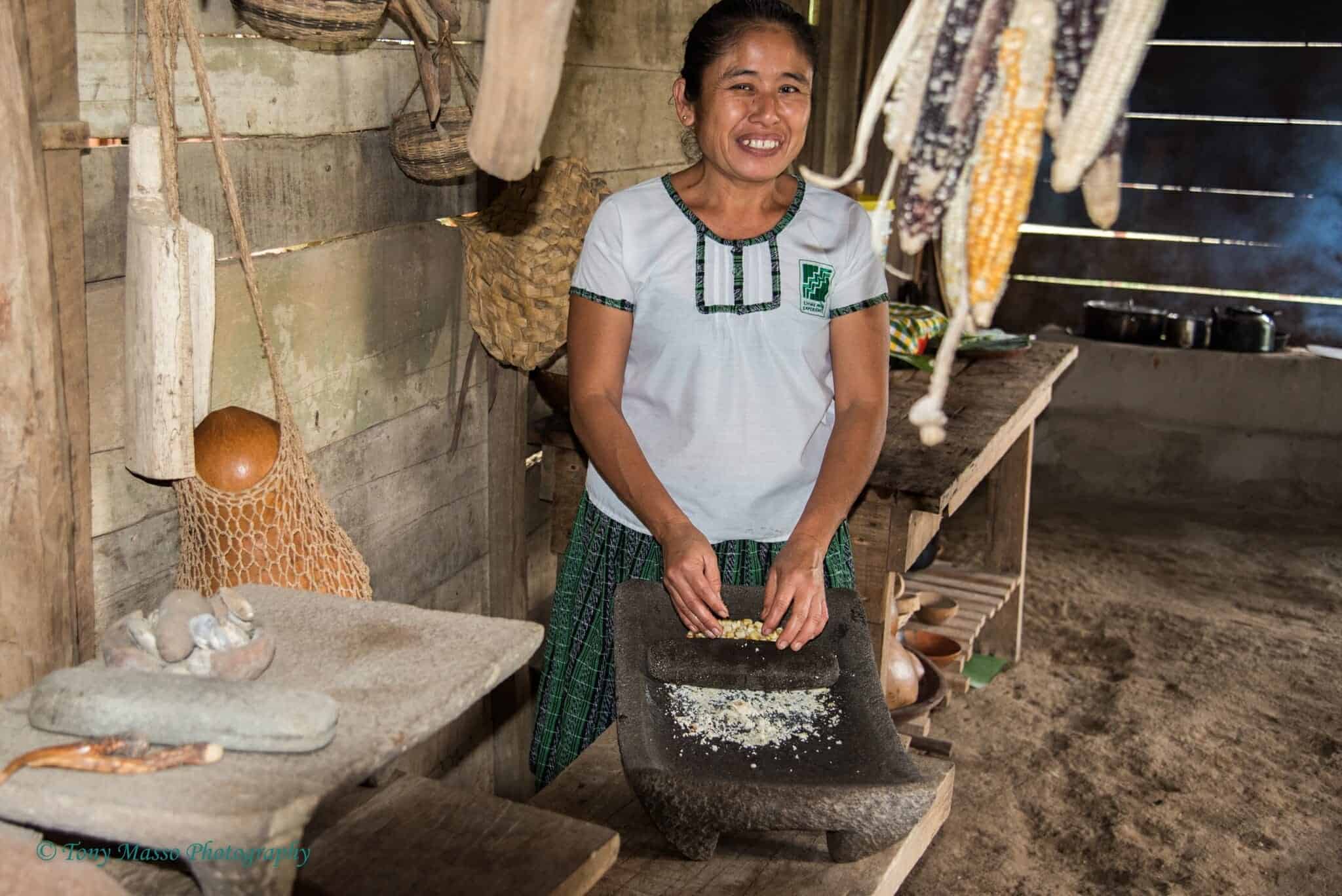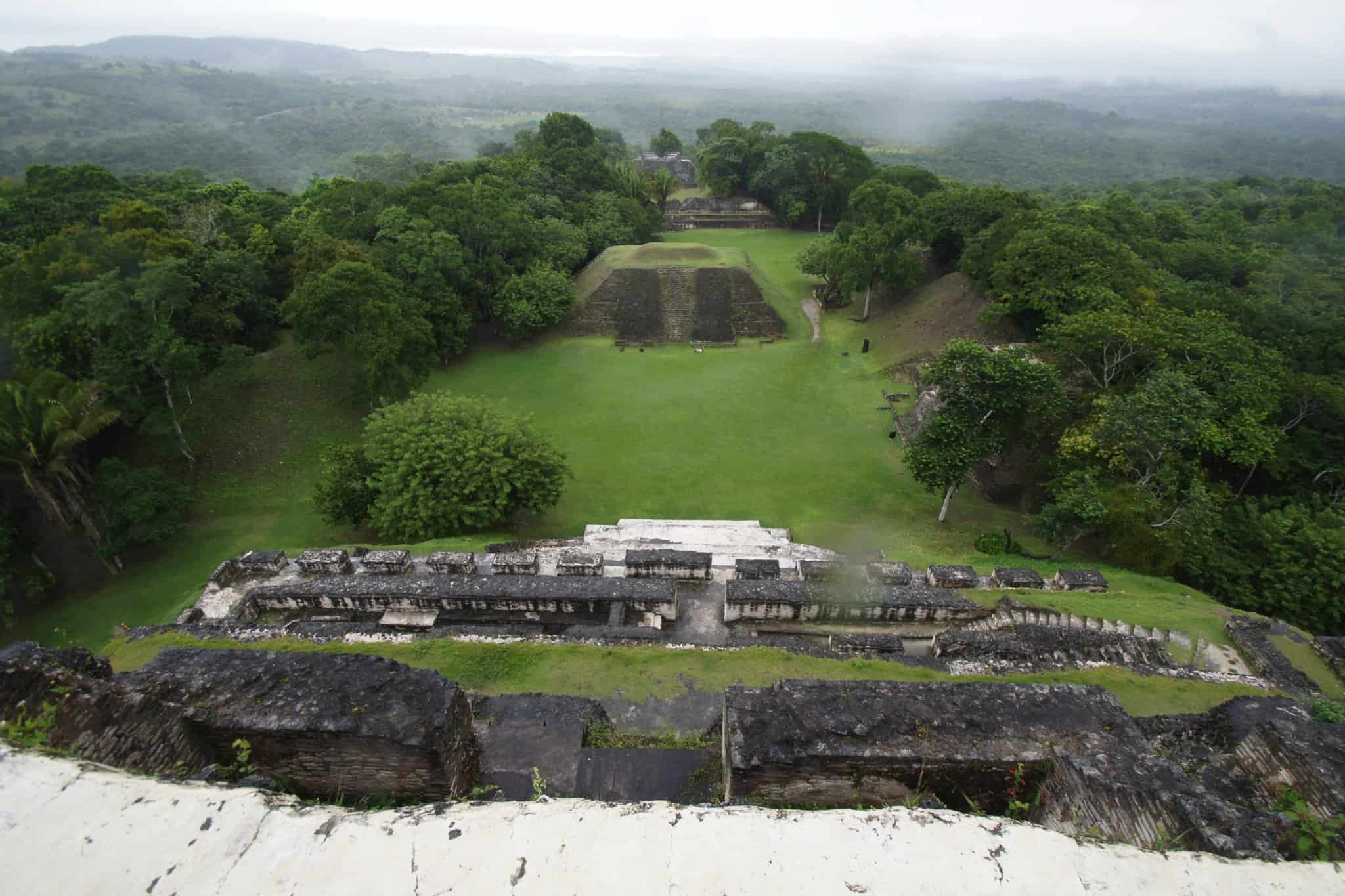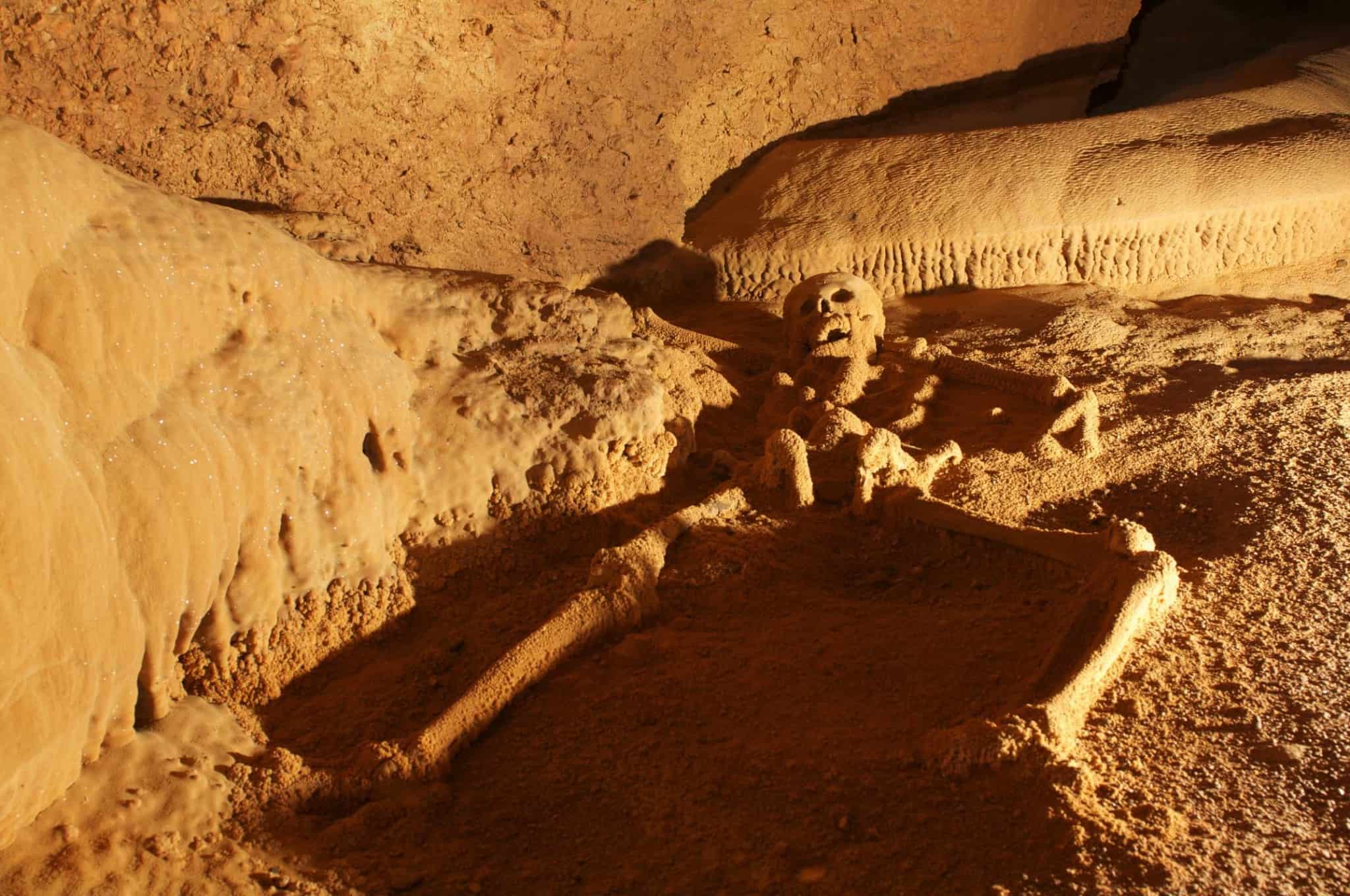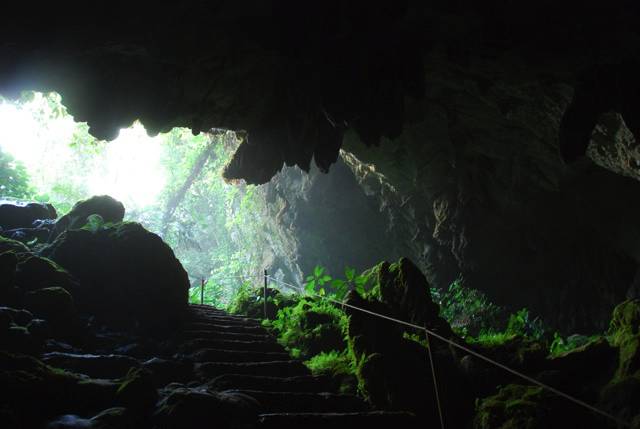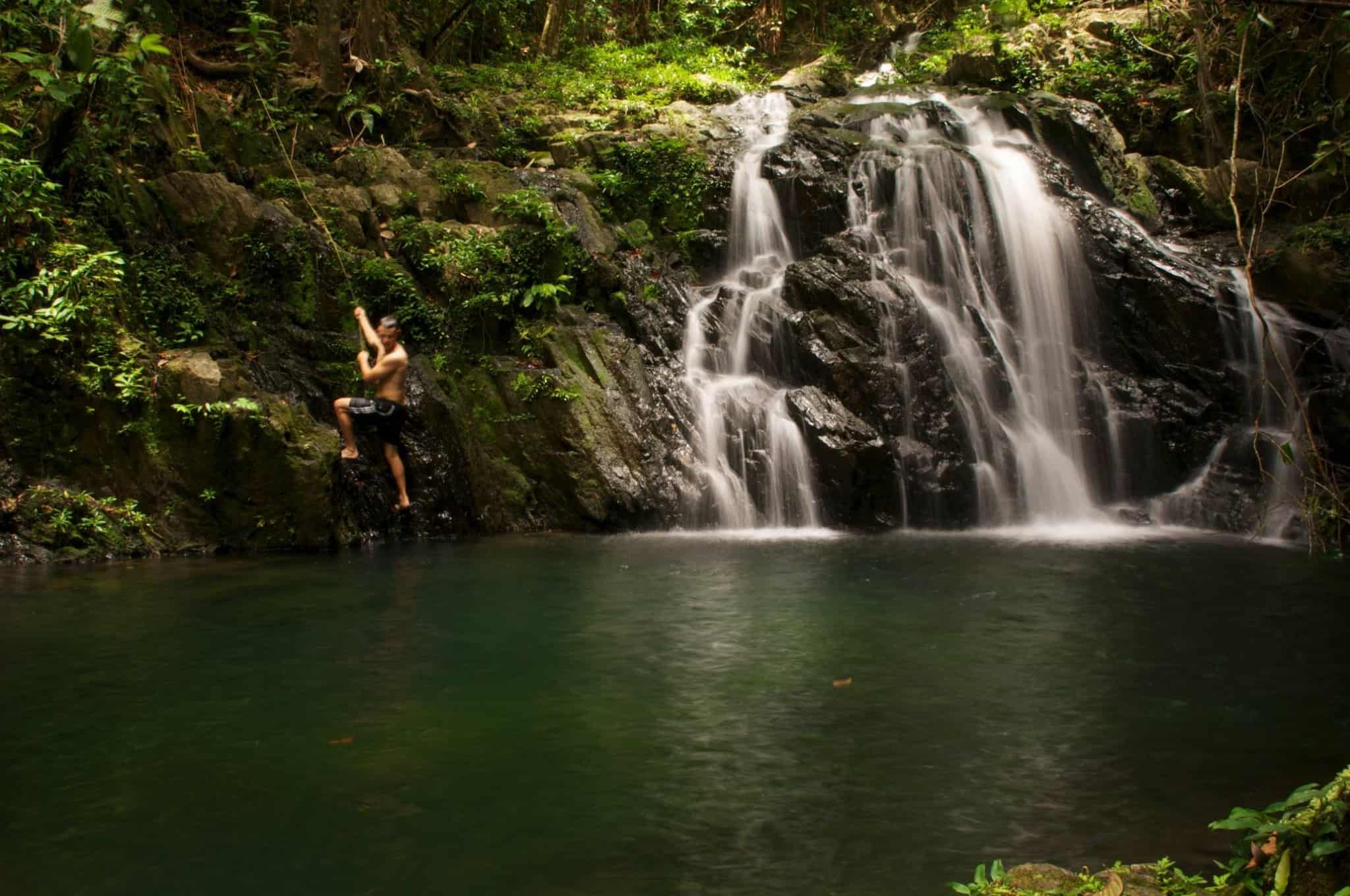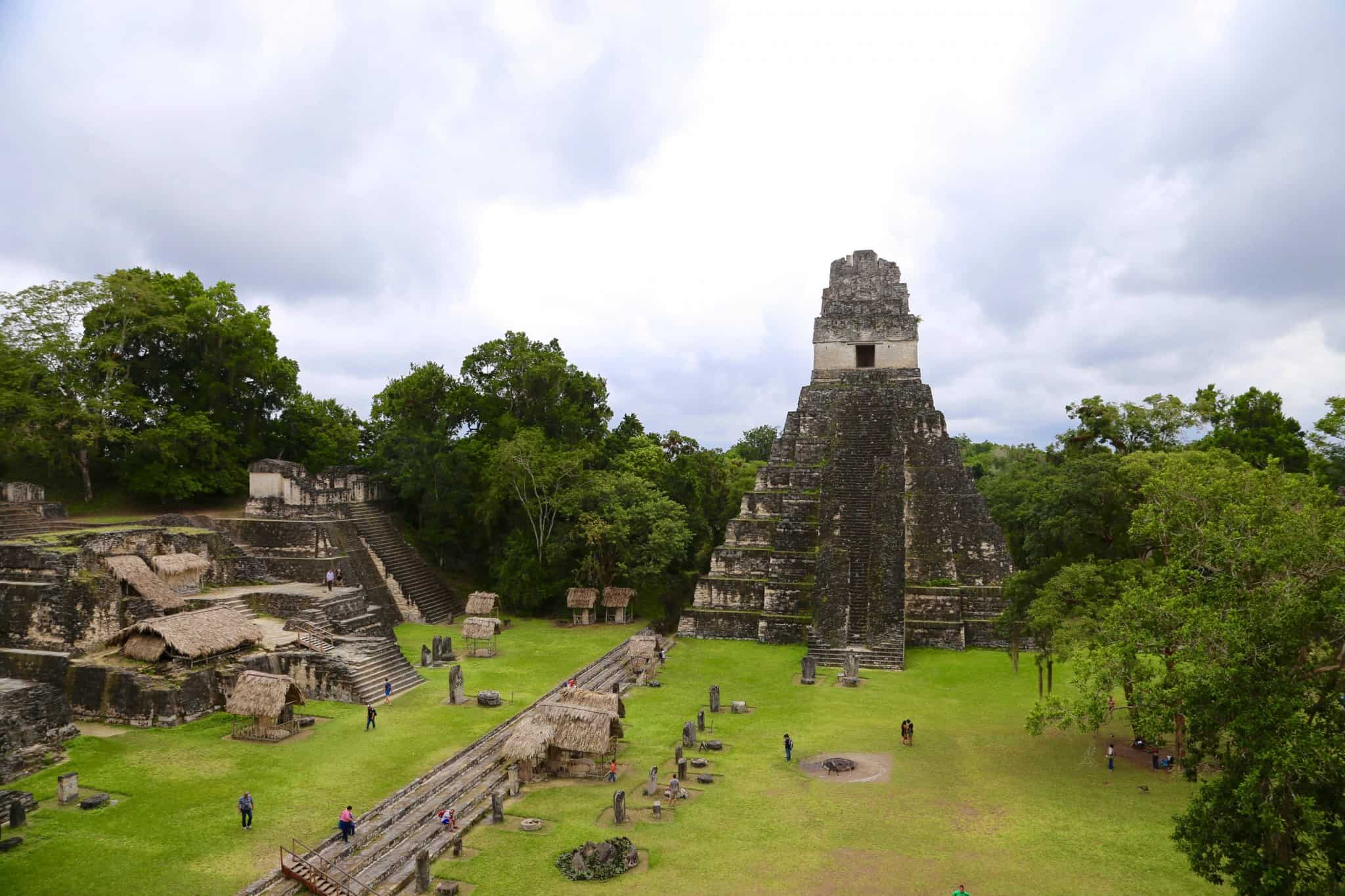Hamanasi Adventure & Dive Resort, Belize
The Best of Belize, On & Offshore
Cultures of Belize
Although a small country with only 332,000 people, Belize is culturally rich. Belize is home to many different ethnic groups, including Chinese, Creole, East Indian, European, Garifuna, Lebanese, Maya, Mennonite and Mestizo, each with their own cultural and linguistic traditions. As a result, many languages are spoken here, but English is the official language. Belizeans of all cultures broadly welcome tourism and visitors are warmly greeted with large smiles. Many of our guests find that the best part of their vacation is the chance to experience some of the different cultures of Belize, and there are many opportunities to do so at Hamanasi, starting with the brief histories below.
Discover the Diverse Cultures of Belize
Garifuna Culture
One of the oldest and most well known cultures of Central America is the Maya. Thought to have first arrived in the area that is now Belize around 1500 BC, the Maya flourished here until 1200 AD. The ancient Maya built massive stone pyramids and cities, developed an intricate writing system comprising hieroglyphics, created beautiful works of art and excelled in mathematics and astronomy. The civilization stretched from the Yucatan peninsula in Mexico west to Guatemala and south to Honduras and El Salvador. At the center was what is now Belize. Impressive Mayan archaeological sites that have been excavated, but still sit surrounded by lush rainforest, give us hints as to how advanced and important the Maya were.
The ancient Mayan civilization was primarily an agrarian one that traded extensively with other city-states in the region. Staple crops included maize, beans, squashes and chili peppers. City centers were primarily reserved for administrative and ceremonial purposes with residential districts surrounding them. The Maya had a highly complex series of interlocking calendars that included one of the earliest known uses of zero. Unfortunately, the ancient Maya were thought to have fallen victim to armed conflicts, plagues and droughts, almost wiping out the entire civilization. The arrival of Europeans in the 1500s practically destroyed remaining holdouts. One exception is Lamanai, which remained a continuous occupied Mayan community until the 17th century.
Today, evidence of this great ancient civilization is found throughout Belize in the form of ancient archeological sites to modern day Mayas practicing many aspects of their impressive heritage. Belizean descendants of the ancient Maya, known as the modern Maya, have formed three distinct groups: the Yucatec, the Mopan and the Ketchi. The Yucatec Maya refer to themselves simply as Mayan and live in the Corozal and Orange Walk districts of Northern Belize. The primary language spoken is Spanish, but Yucateco is also used. The Mopan Maya of Southern Toledo and Stann Creek Districts are originally from the Petén region of Guatemala, while the Maya of the western areas of Belize centered on San Jose Succotz in the Cayo District are a mix of Petén and Yucatecan stock. Immigrating from San Pedro Corcha, Guatemala, the Ketchi are found in several villages in the Toledo District.
Like their ancestors, Modern Maya primarily still lead an agrarian lifestyle with corn, beans and various starches and vegetables raised. Corn is ground into masa to make tortillas, tamales and other dishes and cocoa is turned into chocolate on grinding stones. Many Kekchi Mayan women wear blouses and skirts decorated with hand woven geometric embroidery. Slate carvings, jewelry and baskets are some of their many handicrafts.
Mayan Culture
The history of the Mestizo culture is a story steeped in romance. Some say that it owes its origins to the shipwrecked Spanish sailor Gonzalo Guerrero who came to the shores of Central America after Columbus’ discover of the New World. Initially captured and enslaved by the Maya, he quickly impressed them with his military prowess. Guerrero is said to have become a political and military advisor to Nachancan, the ruler of Old Chetumal, now known as the Santa Rita Maya site in Corozal. After marrying Nachancan’s daughter, Zazil Ha, Guerrero settled in the Yucatan. Their children they became known as the first Mestizos, a mix of Spanish and Maya heritage. They lived happily until the Spanish conquistadors, led by Cortes, arrived in 1519 with plans to conquer the Mayan cities on the Yucatan peninsula. When Cortes offered Guerrero a position fighting for Spain, he promptly declined, proudly supporting his new home and family against the attack. However, the Spanish soldiers won the war and took control of the the Yucatan. Under Spanish rule, which lasted nearly 300 years, the native cultures were largely suppressed but the Mestizo population and culture continued to grow through intermarriage.
The history of the Mestizo culture is a story steeped in romance. Some say that it owes its origins to the shipwrecked Spanish sailor Gonzalo Guerrero who came to the shores of Central America after Columbus’ discover of the New World. Initially captured and enslaved by the Maya, he quickly impressed them with his military prowess. Guerrero is said to have become a political and military advisor to Nachancan, the ruler of Old Chetumal, now known as the Santa Rita Maya site in Corozal. After marrying Nachancan’s daughter, Zazil Ha, Guerrero settled in the Yucatan. Their children they became known as the first Mestizos, a mix of Spanish and Maya heritage. They lived happily until the Spanish conquistadors, led by Cortes, arrived in 1519 with plans to conquer the Mayan cities on the Yucatan peninsula. When Cortes offered Guerrero a position fighting for Spain, he promptly declined, proudly supporting his new home and family against the attack. However, the Spanish soldiers won the war and took control of the the Yucatan. Under Spanish rule, which lasted nearly 300 years, the native cultures were largely suppressed but the Mestizo population and culture continued to grow through intermarriage.
Mestizo is the name for a culture that developed on the Yucatan peninsula as a mix between local people of Mayan heritage and people of Spanish heritage that arrived during the Spanish colonial period. Over time many Mestizo left the Yucatan and came to what is now Belize. One of the largest migrations occurred during mid 1800’s when Belize was known as the colony of British Honduras. At that time the Yucatan region was suffering through La Guerra de Castas (the caste wars), one of the most violent conflicts of the Spanish colonial period, and the ancestors of many Belizean Mestizos first came to Belize to flee that conflict. More recently, in the 1980’s, Mestizo from Guatemala, Honduras and EI Salvador have established communities within Belize. Today, over 500 years later, the Mestizo culture accounts for almost 50% of Belize’s population and still displays a beautiful blend of Spanish and Maya customs, from the food and the language, to their Roman Catholic faith.
Mestizo Culture
The history of the Mestizo culture is a story steeped in romance. Some say that it owes its origins to the shipwrecked Spanish sailor Gonzalo Guerrero who came to the shores of Central America after Columbus’ discover of the New World. Initially captured and enslaved by the Maya, he quickly impressed them with his military prowess. Guerrero is said to have become a political and military advisor to Nachancan, the ruler of Old Chetumal, now known as the Santa Rita Maya site in Corozal. After marrying Nachancan’s daughter, Zazil Ha, Guerrero settled in the Yucatan. Their children they became known as the first Mestizos, a mix of Spanish and Maya heritage. They lived happily until the Spanish conquistadors, led by Cortes, arrived in 1519 with plans to conquer the Mayan cities on the Yucatan peninsula. When Cortes offered Guerrero a position fighting for Spain, he promptly declined, proudly supporting his new home and family against the attack. However, the Spanish soldiers won the war and took control of the the Yucatan. Under Spanish rule, which lasted nearly 300 years, the native cultures were largely suppressed but the Mestizo population and culture continued to grow through intermarriage.
Mestizo is the name for a culture that developed on the Yucatan peninsula as a mix between local people of Mayan heritage and people of Spanish heritage that arrived during the Spanish colonial period. Over time many Mestizo left the Yucatan and came to what is now Belize. One of the largest migrations occurred during mid 1800’s when Belize was known as the colony of British Honduras. At that time the Yucatan region was suffering through La Guerra de Castas (the caste wars), one of the most violent conflicts of the Spanish colonial period, and the ancestors of many Belizean Mestizos first came to Belize to flee that conflict. More recently, in the 1980’s, Mestizo from Guatemala, Honduras and EI Salvador have established communities within Belize. Today, over 500 years later, the Mestizo culture accounts for almost 50% of Belize’s population and still displays a beautiful blend of Spanish and Maya customs, from the food and the language, to their Roman Catholic faith.
Creole Culture
During the 1700’s in Belize, European settlers were in control of the logwood trade, with a primary focus on the Mahogany supply which was located in the Northern area of Belize, around modern day Belize City. Slaves were moved from Western Africa, an area that would have been around the present day countries of Senegal and Angola, through the Caribbean. The first notation of slavery in Belize was by a Spanish missionary in 1724, who stated that the British had been moving slaves, originating from African nations, from Jamaica and Bermuda into Belize.
As unions formed between the Europeans and Africans, the children that were borne of these unions became known as Creole. During the 1800’s, Creole people started to extend away from Belize City into other areas of Belize, and today the villages of Freetown Sibun, Gales Point Manatee and More Tomorrow Village are considered to be key cultural centers. Even after the abolition of slavery occurred, many Creole chose to stay and continue to work in the Mahogany plantations, and to this day nearly 25% of Belize’s population are Creole descent.
Creole culture has some very key practices associated with it, including an indigenous language, and food and cooking. The word, Creole itself, defines the language and tradition of the African-European community. Belizean Creoles have created the word “Kriol” to mean the language of the Creoles, which is considered by some as a completely distinct language evolved from, but no longer a dialect of English.
The word “Creole” comes from the Portuguese “criar” meaning “to raise a child born into a family”. As the Portuguese expanded their empire into Brazil, the word mutated to “crioulo” with a meaning of African slaves born into the New World. Eventually the meaning included Europeans born into the New World. The modern Creole culture as we know it, can be found throughout the Caribbean islands and Central America, including Belize.
East Indian Culture
India in the 1800s faced epidemics of drought resulting in skyrocketing food prices and widespread starvation. It also left a huge number of people unemployed and between 1844 and 1917, a large number of East Indians organized with British landowners for passage to the New World, primarily to British Honduras which is now Belize. There they became indentured to logwood and sugar plantations to pay back the money for their transportation. Under the indenture system many were employed to work for a number of years for a “master”, being free to work for themselves after this period. Unfortunately the system was often harsh on the workers and many people were not able to repay their debt and were forced to re-indenture themselves.
Under British colonialism in the 1800’s, a large wave of immigration occurred from India to Belize to supply workers to the logging and sugar industries as indentured workers. The Indian migrants formed small, compact communities around the Toledo and Corozal districts, and over time became integrated into the growing Belizean population through marriage. In the 1950’s there was a second migration of Indian nationals to Belize, primarily comprised of retail traders who have established a strong economic position and influence in both Belize and Guatemala. The exact number of indentured laborers and later immigrants is not known, but in the current day, approximately 2% of Belize’s population is made up of East Indian descendants. Among Belizeans of East Indian descent, the original Indian culture has for the most part not remained, but rather adapted to the more mainstream creole culture of Belize. This isn’t to say that you cannot find Indian influences around Belize, as traditional Indian food can be found cooking in many households.
Chinese Culture
Originally arriving in Belize as laborers and farm workers in 1865, a small group of Chinese workers were brought to Belize and first sent to the Northern areas. They were initially met with hostility by the Mestizos that were already settled in the area and in 1866, they were quickly transferred to Toledo. Many of the older generation of Chinese that are residing in Belize today still practice forms of ancestral worship and Buddhism, while many of the younger generation have converted to Catholicism, a more dominant religion in Belize. Despite this ongoing cultural integration into Belize’s more mainstream cultures, some strong Chinese cultural customs still remain. A child’s one-month birthday is celebrated – it will be the last. Annual birthdays are not observed. No ancestral rites are performed at death, though offerings of food and the burning of “joss sticks” (similar to incense sticks) on the grave is still observed. Also, the eldest male child customarily receives twice the inheritance of any other child in return for complete obedience to his father’s wishes.
Chinese culture arrived in Belize in a similar way to Indian cultural influences, through an influx of migrant labor in the 1800s during the British colonial period. Descendants of this wave of Chinese immigrants still remain, but the majority of todays Chinese population stems from immigration that has occurred since just before World War 2 and currently Punta Gorda has the second largest population of Belizean Chinese after Belize City. Chinese is still spoken among some communities, but more so among the older generation, while the younger generations also appear to be becoming more “creolised” over time and there is fear that spoken and written Chinese will die out in Belize.
Mennonite Culture
The vast majority of ethnic Mennonites in Belize speak Plautdietsch or Low German, while a small minority speaks Pennsylvania German. Standard German is used for reading in church. Most also speak English, Spanish and Kriol. Marriages are arranged. Mennonite women typically wear bonnets and long dresses while men usually wear dark pants and traditional suspenders. Old Order communities still use horse drawn buggies and reject the use of electricity. Farming, carpentry, furniture making, engineering and construction are some of the many economic contributions to Belize. Mennonite communities rely little on the Government of Belize and usually build their own schools, roads and other infrastructure.
Mennonites in Belize have different ethnic backgrounds and have formed different religious bodies. More traditional and conservative Mennonites are found in Shipyard and Upper Barton Creek, while more modernized communities are found in Spanish Lookout and Blue Creek. Most Belizean Mennonites are descendants of Mennonites that settled in the Russian Empire in the 18th and 19th centuries. In 1873, 7,000 Mennonites emigrated from Russia and settled in Manitoba, Canada and some later resettled in Mexico. In the late 1950s some of these Mexican Mennonites settled in then British Honduras. Additionally, some Old Order Mennonites from Pennsylvania in the USA settled in Belize. Many Kriol and Mestizo Belizeans have converted to Mennonitism. Mennonites only accept adults as members.
Information above was obtained from various online sources. Additions and corrections are welcomed via our contact us page!
Printable Birding Guide
We Send Great Emails!
Sign up to receive emails from Hamanasi.
Cultural Adventures
Enrich your time in Belize with a variety of adventures exploring aspects of Belize’s cultures in present day and historical times.
Ready to Book?

Karina

Gilroy

Patricia
Our Belize reservation staff are at the resort and ready to assist you 365 days per year.
Cultures of Belize
Cultures of Belize
Although a small country with only 332,000 people, Belize is culturally rich. Belize is home to many different ethnic groups, including Chinese, Creole, East Indian, European, Garifuna, Lebanese, Maya, Mennonite and Mestizo, each with their own cultural and linguistic traditions. As a result, many languages are spoken here, but English is the official language. Belizeans of all cultures broadly welcome tourism and visitors are warmly greeted with large smiles. Many of our guests find that the best part of their vacation is the chance to experience some of the different cultures of Belize, and there are many opportunities to do so at Hamanasi, starting with the brief histories below.
Discover the Diverse Cultures of Belize
Garifuna Culture
One of the oldest and most well known cultures of Central America is the Maya. Thought to have first arrived in the area that is now Belize around 1500 BC, the Maya flourished here until 1200 AD. The ancient Maya built massive stone pyramids and cities, developed an intricate writing system comprising hieroglyphics, created beautiful works of art and excelled in mathematics and astronomy. The civilization stretched from the Yucatan peninsula in Mexico west to Guatemala and south to Honduras and El Salvador. At the center was what is now Belize. Impressive Mayan archaeological sites that have been excavated, but still sit surrounded by lush rainforest, give us hints as to how advanced and important the Maya were.
The ancient Mayan civilization was primarily an agrarian one that traded extensively with other city-states in the region. Staple crops included maize, beans, squashes and chili peppers. City centers were primarily reserved for administrative and ceremonial purposes with residential districts surrounding them. The Maya had a highly complex series of interlocking calendars that included one of the earliest known uses of zero. Unfortunately, the ancient Maya were thought to have fallen victim to armed conflicts, plagues and droughts, almost wiping out the entire civilization. The arrival of Europeans in the 1500s practically destroyed remaining holdouts. One exception is Lamanai, which remained a continuous occupied Mayan community until the 17th century.
Today, evidence of this great ancient civilization is found throughout Belize in the form of ancient archeological sites to modern day Mayas practicing many aspects of their impressive heritage. Belizean descendants of the ancient Maya, known as the modern Maya, have formed three distinct groups: the Yucatec, the Mopan and the Ketchi. The Yucatec Maya refer to themselves simply as Mayan and live in the Corozal and Orange Walk districts of Northern Belize. The primary language spoken is Spanish, but Yucateco is also used. The Mopan Maya of Southern Toledo and Stann Creek Districts are originally from the Petén region of Guatemala, while the Maya of the western areas of Belize centered on San Jose Succotz in the Cayo District are a mix of Petén and Yucatecan stock. Immigrating from San Pedro Corcha, Guatemala, the Ketchi are found in several villages in the Toledo District.
Like their ancestors, Modern Maya primarily still lead an agrarian lifestyle with corn, beans and various starches and vegetables raised. Corn is ground into masa to make tortillas, tamales and other dishes and cocoa is turned into chocolate on grinding stones. Many Kekchi Mayan women wear blouses and skirts decorated with hand woven geometric embroidery. Slate carvings, jewelry and baskets are some of their many handicrafts.
Mayan Culture
The history of the Mestizo culture is a story steeped in romance. Some say that it owes its origins to the shipwrecked Spanish sailor Gonzalo Guerrero who came to the shores of Central America after Columbus’ discover of the New World. Initially captured and enslaved by the Maya, he quickly impressed them with his military prowess. Guerrero is said to have become a political and military advisor to Nachancan, the ruler of Old Chetumal, now known as the Santa Rita Maya site in Corozal. After marrying Nachancan’s daughter, Zazil Ha, Guerrero settled in the Yucatan. Their children they became known as the first Mestizos, a mix of Spanish and Maya heritage. They lived happily until the Spanish conquistadors, led by Cortes, arrived in 1519 with plans to conquer the Mayan cities on the Yucatan peninsula. When Cortes offered Guerrero a position fighting for Spain, he promptly declined, proudly supporting his new home and family against the attack. However, the Spanish soldiers won the war and took control of the the Yucatan. Under Spanish rule, which lasted nearly 300 years, the native cultures were largely suppressed but the Mestizo population and culture continued to grow through intermarriage.
The history of the Mestizo culture is a story steeped in romance. Some say that it owes its origins to the shipwrecked Spanish sailor Gonzalo Guerrero who came to the shores of Central America after Columbus’ discover of the New World. Initially captured and enslaved by the Maya, he quickly impressed them with his military prowess. Guerrero is said to have become a political and military advisor to Nachancan, the ruler of Old Chetumal, now known as the Santa Rita Maya site in Corozal. After marrying Nachancan’s daughter, Zazil Ha, Guerrero settled in the Yucatan. Their children they became known as the first Mestizos, a mix of Spanish and Maya heritage. They lived happily until the Spanish conquistadors, led by Cortes, arrived in 1519 with plans to conquer the Mayan cities on the Yucatan peninsula. When Cortes offered Guerrero a position fighting for Spain, he promptly declined, proudly supporting his new home and family against the attack. However, the Spanish soldiers won the war and took control of the the Yucatan. Under Spanish rule, which lasted nearly 300 years, the native cultures were largely suppressed but the Mestizo population and culture continued to grow through intermarriage.
Mestizo is the name for a culture that developed on the Yucatan peninsula as a mix between local people of Mayan heritage and people of Spanish heritage that arrived during the Spanish colonial period. Over time many Mestizo left the Yucatan and came to what is now Belize. One of the largest migrations occurred during mid 1800’s when Belize was known as the colony of British Honduras. At that time the Yucatan region was suffering through La Guerra de Castas (the caste wars), one of the most violent conflicts of the Spanish colonial period, and the ancestors of many Belizean Mestizos first came to Belize to flee that conflict. More recently, in the 1980’s, Mestizo from Guatemala, Honduras and EI Salvador have established communities within Belize. Today, over 500 years later, the Mestizo culture accounts for almost 50% of Belize’s population and still displays a beautiful blend of Spanish and Maya customs, from the food and the language, to their Roman Catholic faith.
Mestizo Culture
The history of the Mestizo culture is a story steeped in romance. Some say that it owes its origins to the shipwrecked Spanish sailor Gonzalo Guerrero who came to the shores of Central America after Columbus’ discover of the New World. Initially captured and enslaved by the Maya, he quickly impressed them with his military prowess. Guerrero is said to have become a political and military advisor to Nachancan, the ruler of Old Chetumal, now known as the Santa Rita Maya site in Corozal. After marrying Nachancan’s daughter, Zazil Ha, Guerrero settled in the Yucatan. Their children they became known as the first Mestizos, a mix of Spanish and Maya heritage. They lived happily until the Spanish conquistadors, led by Cortes, arrived in 1519 with plans to conquer the Mayan cities on the Yucatan peninsula. When Cortes offered Guerrero a position fighting for Spain, he promptly declined, proudly supporting his new home and family against the attack. However, the Spanish soldiers won the war and took control of the the Yucatan. Under Spanish rule, which lasted nearly 300 years, the native cultures were largely suppressed but the Mestizo population and culture continued to grow through intermarriage.
Mestizo is the name for a culture that developed on the Yucatan peninsula as a mix between local people of Mayan heritage and people of Spanish heritage that arrived during the Spanish colonial period. Over time many Mestizo left the Yucatan and came to what is now Belize. One of the largest migrations occurred during mid 1800’s when Belize was known as the colony of British Honduras. At that time the Yucatan region was suffering through La Guerra de Castas (the caste wars), one of the most violent conflicts of the Spanish colonial period, and the ancestors of many Belizean Mestizos first came to Belize to flee that conflict. More recently, in the 1980’s, Mestizo from Guatemala, Honduras and EI Salvador have established communities within Belize. Today, over 500 years later, the Mestizo culture accounts for almost 50% of Belize’s population and still displays a beautiful blend of Spanish and Maya customs, from the food and the language, to their Roman Catholic faith.
Creole Culture
During the 1700’s in Belize, European settlers were in control of the logwood trade, with a primary focus on the Mahogany supply which was located in the Northern area of Belize, around modern day Belize City. Slaves were moved from Western Africa, an area that would have been around the present day countries of Senegal and Angola, through the Caribbean. The first notation of slavery in Belize was by a Spanish missionary in 1724, who stated that the British had been moving slaves, originating from African nations, from Jamaica and Bermuda into Belize.
As unions formed between the Europeans and Africans, the children that were borne of these unions became known as Creole. During the 1800’s, Creole people started to extend away from Belize City into other areas of Belize, and today the villages of Freetown Sibun, Gales Point Manatee and More Tomorrow Village are considered to be key cultural centers. Even after the abolition of slavery occurred, many Creole chose to stay and continue to work in the Mahogany plantations, and to this day nearly 25% of Belize’s population are Creole descent.
Creole culture has some very key practices associated with it, including an indigenous language, and food and cooking. The word, Creole itself, defines the language and tradition of the African-European community. Belizean Creoles have created the word “Kriol” to mean the language of the Creoles, which is considered by some as a completely distinct language evolved from, but no longer a dialect of English.
The word “Creole” comes from the Portuguese “criar” meaning “to raise a child born into a family”. As the Portuguese expanded their empire into Brazil, the word mutated to “crioulo” with a meaning of African slaves born into the New World. Eventually the meaning included Europeans born into the New World. The modern Creole culture as we know it, can be found throughout the Caribbean islands and Central America, including Belize.
East Indian Culture
India in the 1800s faced epidemics of drought resulting in skyrocketing food prices and widespread starvation. It also left a huge number of people unemployed and between 1844 and 1917, a large number of East Indians organized with British landowners for passage to the New World, primarily to British Honduras which is now Belize. There they became indentured to logwood and sugar plantations to pay back the money for their transportation. Under the indenture system many were employed to work for a number of years for a “master”, being free to work for themselves after this period. Unfortunately the system was often harsh on the workers and many people were not able to repay their debt and were forced to re-indenture themselves.
Under British colonialism in the 1800’s, a large wave of immigration occurred from India to Belize to supply workers to the logging and sugar industries as indentured workers. The Indian migrants formed small, compact communities around the Toledo and Corozal districts, and over time became integrated into the growing Belizean population through marriage. In the 1950’s there was a second migration of Indian nationals to Belize, primarily comprised of retail traders who have established a strong economic position and influence in both Belize and Guatemala. The exact number of indentured laborers and later immigrants is not known, but in the current day, approximately 2% of Belize’s population is made up of East Indian descendants. Among Belizeans of East Indian descent, the original Indian culture has for the most part not remained, but rather adapted to the more mainstream creole culture of Belize. This isn’t to say that you cannot find Indian influences around Belize, as traditional Indian food can be found cooking in many households.
Chinese Culture
Originally arriving in Belize as laborers and farm workers in 1865, a small group of Chinese workers were brought to Belize and first sent to the Northern areas. They were initially met with hostility by the Mestizos that were already settled in the area and in 1866, they were quickly transferred to Toledo. Many of the older generation of Chinese that are residing in Belize today still practice forms of ancestral worship and Buddhism, while many of the younger generation have converted to Catholicism, a more dominant religion in Belize. Despite this ongoing cultural integration into Belize’s more mainstream cultures, some strong Chinese cultural customs still remain. A child’s one-month birthday is celebrated – it will be the last. Annual birthdays are not observed. No ancestral rites are performed at death, though offerings of food and the burning of “joss sticks” (similar to incense sticks) on the grave is still observed. Also, the eldest male child customarily receives twice the inheritance of any other child in return for complete obedience to his father’s wishes.
Chinese culture arrived in Belize in a similar way to Indian cultural influences, through an influx of migrant labor in the 1800s during the British colonial period. Descendants of this wave of Chinese immigrants still remain, but the majority of todays Chinese population stems from immigration that has occurred since just before World War 2 and currently Punta Gorda has the second largest population of Belizean Chinese after Belize City. Chinese is still spoken among some communities, but more so among the older generation, while the younger generations also appear to be becoming more “creolised” over time and there is fear that spoken and written Chinese will die out in Belize.
Mennonite Culture
The vast majority of ethnic Mennonites in Belize speak Plautdietsch or Low German, while a small minority speaks Pennsylvania German. Standard German is used for reading in church. Most also speak English, Spanish and Kriol. Marriages are arranged. Mennonite women typically wear bonnets and long dresses while men usually wear dark pants and traditional suspenders. Old Order communities still use horse drawn buggies and reject the use of electricity. Farming, carpentry, furniture making, engineering and construction are some of the many economic contributions to Belize. Mennonite communities rely little on the Government of Belize and usually build their own schools, roads and other infrastructure.
Mennonites in Belize have different ethnic backgrounds and have formed different religious bodies. More traditional and conservative Mennonites are found in Shipyard and Upper Barton Creek, while more modernized communities are found in Spanish Lookout and Blue Creek. Most Belizean Mennonites are descendants of Mennonites that settled in the Russian Empire in the 18th and 19th centuries. In 1873, 7,000 Mennonites emigrated from Russia and settled in Manitoba, Canada and some later resettled in Mexico. In the late 1950s some of these Mexican Mennonites settled in then British Honduras. Additionally, some Old Order Mennonites from Pennsylvania in the USA settled in Belize. Many Kriol and Mestizo Belizeans have converted to Mennonitism. Mennonites only accept adults as members.
Information above was obtained from various online sources. Additions and corrections are welcomed via our contact us page!
Printable Birding Guide
We Send Great Emails!
Sign up to receive emails from Hamanasi.
Cultural Adventures
Enrich your time in Belize with a variety of adventures exploring aspects of Belize’s cultures in present day and historical times.
Ready to Book?

Karina

Gilroy

Patricia
Our Belize reservation staff are at the resort and ready to assist you 365 days per year.
Printable Birding Guide
We Send Great Emails!
Sign up to receive emails from Hamanasi.
